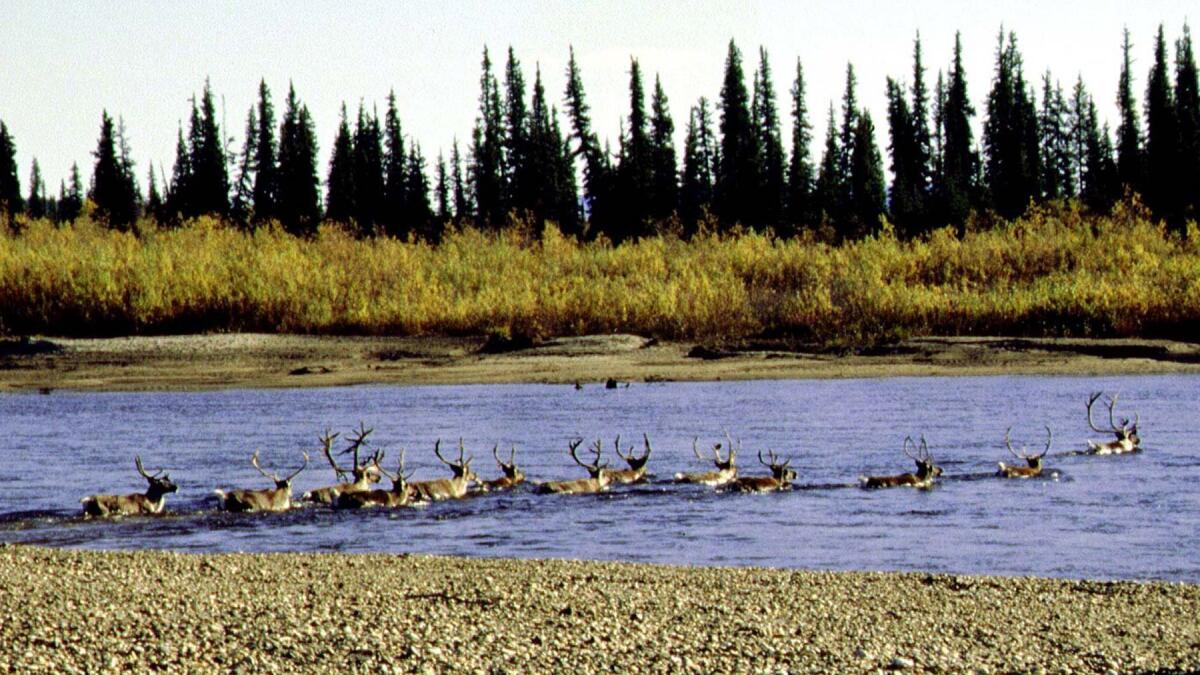Editorial: Alaska’s national refuges are not private game reserves

- Share via
The 16 national wildlife refuges in Alaska span the state from the remote Arctic on the northern edge to the volcanic Aleutian islands southwest of Anchorage. Across the refuges’ nearly 77 million acres, animal diversity abounds — ice worms and seabirds, black bears and grizzly bears, wolves, moose, caribou, predators and prey. There is one guiding principle behind the U.S. Fish and Wildlife Service’s management of all the species on these refuges: Conserve the natural diversity of wildlife as it is. In essence, let them be, and let humans enjoy the spectacle of nature on these refuges.
But at these particular enclaves, that also means letting humans hunt — within limits. It’s difficult to believe that any wildlife refuge isn’t truly a refuge from hunters. That’s the way the national system of refuges started, but over the last quarter century, many have been opened up to regulated hunting.
And herein lies the problem. The state of Alaska shares the responsibility for managing the refuges’ wildlife, and it has its own goal: Making sure there are plenty of animals to hunt. In an effort to maximize the number of moose, caribou and deer, the state authorized in some areas more efficient but brutal methods to kill the wolves and bears that prey upon those popular hunting targets.
Concerned that the state’s predator control campaign could become widespread enough to disrupt the refuges’ ecosystems, the U.S. Fish and Wildlife Service issued a rule that bars hunters and trappers in the refuges from killing wolves and their pups in their dens, killing bear cubs or sows with cubs, baiting brown bears, shooting bears from aircraft, or capturing bears with traps and snares. The rule took effect in September.
Alarmingly, Alaska’s congressional delegation is pushing hard to get rid of these ecologically sound and humane restrictions, and Republican lawmakers are responding. A joint resolution revoking the rule has passed the House and is expected to come up for a vote in the Senate the week of March 20. It is misguided and should be hunted down and killed.
Let’s be clear on a few things. The federal rule prohibits only these gruesome methods of hunting on national wildlife refuges. It does not apply to hunting in state-owned wilderness or to rural Alaskan residents who hunt for subsistence. And it’s doubtful that killing huge numbers of wolves and bears would automatically drive up the number of moose and caribou. “The best available science indicates that widespread elimination of bears, coyotes and wolves will quite unlikely make ungulate herds magically reappear,” wrote 31 biologists and other scientists to then-Secretary of the Interior Sally Jewell last year when the rule was still being studied.
In other words, the Alaskan government sought to allow types of hunting that probably would not accomplish what it wants to accomplish, but would end up killing brown bears who’d been lured with bait, slaughtering helpless cubs and wolf pups, and allowing bears to languish in excruciating pain for unknown hours in steel-jawed traps. This is unconscionable.
And this is not a case of states’ rights being usurped by the federal government. If anything, the congressional measures would subvert the federal government’s decades-long statutory authority over federal lands in Alaska. The national refuges are not Alaska’s private game reserve. That wilderness belongs to all of us. The Senate should stop this bill from going any further.
Follow the Opinion section on Twitter @latimesopinion or Facebook
A cure for the common opinion
Get thought-provoking perspectives with our weekly newsletter.
You may occasionally receive promotional content from the Los Angeles Times.



